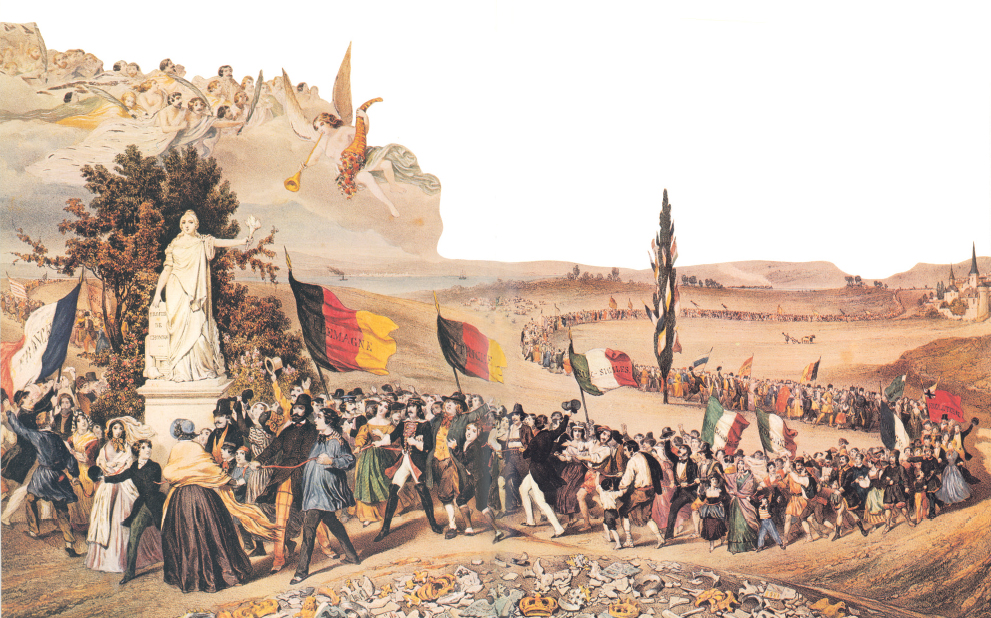Understanding Western Society
Printed Page 666
A Democratic Republic in France
For eighteen years, Louis Philippe’s reign, labeled the “bourgeois monarchy” because it served the selfish interests of France’s wealthy elites, had been characterized by stubborn inaction and complacency. Corrupt politicians refused to approve social legislation or consider electoral reform. The government’s failures united a diverse group of opponents against the king. Bourgeois merchants, opposition deputies, and liberal intellectuals shared a sense of outrage with middle-
The revolutionaries immediately set about drafting a democratic, republican constitution for France’s Second Republic. Building such a republic meant giving the right to vote to every adult male, and this was quickly done. The provisional republican government further expressed sympathy for revolutionary freedoms by calling for liberty, fraternity, and equality; guaranteeing workplace reforms; freeing all slaves in French colonies; and abolishing the death penalty. (See “Picturing the Past: The Triumph of Democratic Republics.”)
Yet there were profound differences within the revolutionary coalition. On the one hand, the moderate liberal republicans of the middle class viewed universal male suffrage as the ultimate concession to dangerous popular forces, and they strongly opposed any further radical social measures. On the other hand, radical republicans were committed to some kind of socialism. Hard-
Worsening depression and rising unemployment brought these conflicting goals to the fore in 1848. Louis Blanc, who along with a worker named Albert represented the republican socialists in the provisional government, urged the creation of permanent government-

CONNECTIONS: What do the angels, the liberty statue, and the discarded crowns suggest about the artist’s view of the events of 1848? Do you think this illustration was created before or after the collapse of the revolution in France? Why?
The moderate republicans, willing to provide only temporary relief, wanted no such thing. The resulting compromise set up national workshops — soon to become little more than a vast program of pick-
While the Paris workshops grew, the French people went to the election polls in late April. The result was a bitter loss for the republicans. Voting in most cases for the first time, the people of France elected to the new 900-
The new government’s executive committee dropped Blanc and thereafter included no representative of the Parisian working class. Fearing that their socialist hopes were about to be dashed, artisans and unskilled workers invaded the Constituent Assembly on May 15 and tried to proclaim a new revolutionary state. The government used the middle-
A spontaneous and violent uprising followed. Barricades sprang up again in the narrow streets of Paris, and a terrible class war began. After three terrible “June Days” of street fighting and the death or injury of more than ten thousand people, the republican army under General Louis Cavaignac stood triumphant in a sea of working-
The revolution in France thus ended in spectacular failure. The February coalition of the middle and working classes had in four short months become locked in mortal combat. In place of a generous democratic republic, the Constituent Assembly completed a constitution featuring a strong executive. This allowed Louis Napoleon, nephew of Napoleon Bonaparte, to win a landslide victory in the election of December 1848. The appeal of his great name as well as the desire of the propertied classes for order at any cost had led to what would become a semi-